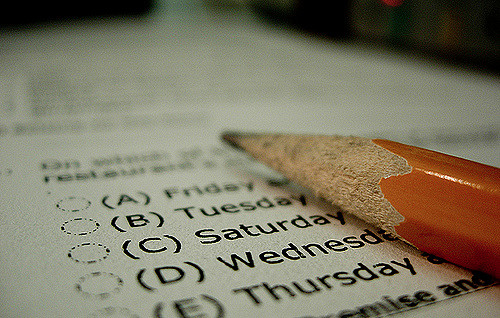One of the most common questions I see among skincare newbies is, “how do I figure out my skin type?”

Good question.
Without knowing your skin type, you can’t really make any progress on improving your skin. While you can definitely take a Teen Vogue quiz to “Determine Your Skin Type Once and For All” (seriously I am not making this up), I’m actually going to recommend a slightly more…advanced…method.
The Basics
Before we dive into figuring out your skin type, let me quickly explain how skin types work. In general, there are four major types: Normal, oily, dry and combination.
Normal skin is, well…normal. It isn’t excessively oily or shiny, nor does it flake or itch. This type is also sometimes referred to as “balanced.”
Dry skin (which IS NOT the same as dehydrated!) suffers from sub-optimal oil levels. Basically, dry skin chronically does not produce enough oil to keep your face from getting flaky and uncomfortable.
Oily skin can vary in severity, but the basic qualifier is that your skin produces too much oil no matter what you do. This can affect your whole face (and even your scalp!), but most people get oily primarily in their T-zone.
Combination skin is the most fun of all! (I hope you’re sensing the sarcasm here.) Combo skin happens when one face is normal, dry, and/or oily in various places. It does require a bit more customization than any of the other skin types, but customization the hallmark of the Asian beauty routine!
(A Quick Aside About Other Skin Descriptors)
Okay, I know some of you are probably wondering why things like “sensitive,” “acne-prone,” or “dehydrated” are not included in that list. The short answer is because you need to figure out which of the four types your skin fits into first.
The longer answer is that those terms aren’t actual skin types, they’re skin conditions. Skin types are more or less with you for your whole life, while skin conditions can change over time.
Skin types are lifelong companions. Skin conditions are changeable with adjustments to your skincare and lifestyle.
Here’s a quick, personal example:
When I started my skincare journey a little over a year ago, I thought my skin was going to be extremely oily always and forever. Like, day seven of the BP oil spill levels of oily.
Fast forward to today: Now I understand that my skin is naturally oily on my forehead, balanced on my cheeks, and mostly normal but slightly oily on my chin and nose.
That means my skin type is combination/oily. Or, as I like to call it, “finicky and high-maintenance.”
My skin concerns were a huge contributor to the oily mess that my face was when I started. My skin tends to stay dehydrated, which amps up sebum production. This can also lead to breakouts and sensitivity, which lead to redness and giant pores. These are skin conditions that I changed (and am still in the process of changing!) by upping my hydration game and taking better care of my skin overall.
Changing or improving skin conditions is a very YMMV journey that usually involves lots of trial and error. Don’t give up!
Drumroll Please…Test Time!

Now that I’ve inundated you with lots of jargon, I’ll move on to the whole reason you’re reading this post.
Disclaimer Alert – I’m pretty sure I didn’t invent this method because I’ve seen other people do similar things. I don’t know who thought of it first, but I’ve tested it lots of times with lots of people. It’s simple, effective and a great starting point.
My tried-and-true method for determining your skin type goes like this:
Step One: Wash your face. Preferably with a low pH cleanser, because dat low pH life is everything.
Step Two: Wait about 30 minutes. DO NOT DO ANYTHING ELSE TO YOUR FACE. You’ll have to start over.
I know your face might feel weird or tight, but stay strong. It’s only 30 minutes. Here’s a Gudetama compilation on YouTube to help pass the time. If you have never experienced the cuteness that is this lazy, salty little egg cartoon, this will be the best 30 minutes of your life. You’re welcome.
Step Three: Grab some blotting paper. Or single-ply toilet paper. Tissue paper also works remarkably well for this. So do those weird, tissue toilet seat covers that you see in public restrooms. Don’t ask why I know that. Purely hypothetical, I assure you. I’m lying. Remember that BP oil spill face I mentioned before? Welp. Desperate times, etc. etc.
Gently blot your entire face. If you can blot your whole face at once, excellent. If not, make sure you use a separate blotting sheet or piece of toilet paper for each section of your face (i.e. – cheeks, forehead, nose, chin). The separate blots for each section of your face are important, because you might have combo skin that needs addressing.
Step Four: Examine said tissues. If there’s no oil at all, your skin is dry. If there’s just a little bit of oil, congrats you lucky SOB, your skin is normal! If there’s a crapload of oil, sorry bud, your skin is oily.
And that’s it! Easy-peasy. Once you know your skin type, you can start determining your skin concerns and curating a routine that is best suited to you.
What other tried-and-true methods do you know for determining skin type? Tell me about them!
This was incredibly helpful, thank you! I enjoyed the sarcasm as well. Oily/combination skin is the worst. 😬